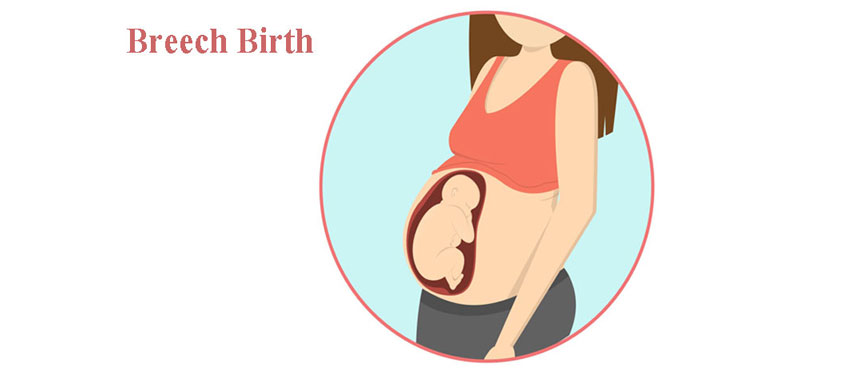During the delivery of a baby, his or her head is delivered first. However, in certain cases, head is not at the bottom position, instead buttocks are positioned at the bottom. When baby is delivered in bottom first position, it is said to be a breach birth. Read on to learn more about the breech position and breech birth of a baby.What is a Breech Position?
Breech births occur in about 3% of term pregnancies. In the initial part of a pregnancy, the baby floats and turns every which way in the amniotic fluid. As the foetus grows, the intrauterine space begins to shrink and the baby has less and less space to float around in. Finally, around the 36th or 37th week, the baby settles down into a vertical, head-down position known as the vertex position. However, in the case of breech babies, they settle into a bottom-first or breech position. Up until 32 weeks gestation about 15% of babies lie this way, but the number at term is down to 3 or 4% as many spontaneously turn around without any assistance.
There are three types of breech positions:
a) Frank breech: In this position, you find that the baby's bottom is down with its legs extended up towards the face.
b) Complete breech: In this position, the thighs are flexed at the groin, but the legs are bent at the knees, almost as if the baby were sitting cross-legged.
c) Incomplete breech: In this position, one or more of the feet or knees lies below the level of the buttocks of the baby, making it the part of the baby closest to the mother's vagina.
External Cephalic Version (ECV)
A breech birth can be converted into a vertex position before the onset of labour by turning the baby manually. Manual manipulation of the breech baby is called external cephalic version (ECV). Some babies are stubborn and return to the breech position even after being turned. This is the reason doctors wait almost until term to turn the baby.
ECV should not be attempted in the following circumstances as it can lead to fetal distress or cause bleeding or premature rupture of the membranes:
a) The obstetrician should have experience in performing ECVs and be comfortable with the idea of doing it;
b) If the woman is rhesus negative;
c) If the woman has experienced bleeding;
d) If the placenta is situated low in the uterus.
An ECV can be performed any time after 36 weeks. The first step is to do an ultrasound scan to check the position of the baby, the position of its limbs, the amount of amniotic fluid, the location of the placenta, and the size of the baby and the mother. All these factors have to be considered before taking the decision to go ahead.
The Procedure
Once the doctor has given the go ahead, the woman is given some medication to relax her uterine muscles. The doctor then applies some body-oil and places one of his hands on the mother's abdomen over the baby's head, the other over its buttocks. He then moves his hands in opposite directions as the baby is gently stroked around. The whole procedure takes a few minutes.
The baby's heartbeat is monitored throughout the procedure to detect any sign of fetal distress like a significant increase, decrease or irregularity in the heart rate. In such a case, the baby is immediately returned to its original position. To ensure the success of ECV, the woman is usually requested to stay in an upright position for the rest of the day.
Part 2 - Complications associated with Breech Births































